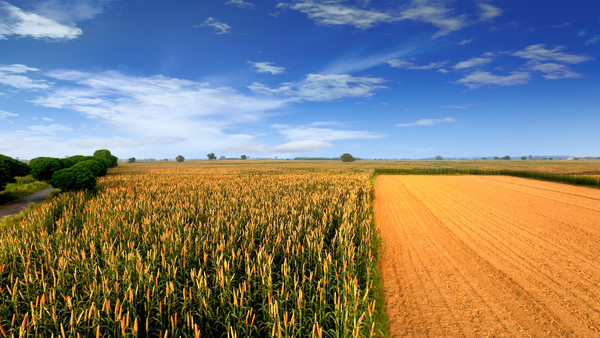
Agricultural Tractors: India and China have half of the global market
Of the 1.9 million tractors sold in 2016, the two Asian giants absorbed 990 thousand units, confirming their trends as rapidly expanding markets. Analyses of the demand for agricultural mechanization – carried out in New Delhi in the context of EIMA Agrimach, the international exhibition of agricultural machinery – however highlighted the fact that in order to improve agricultural productivity it is necessary not only to increase mechanization, but also to implement more up-to-date agronomical techniques, systems for an optimized management of natural resources and professional training for agricultural operators at all levels
The global market for tractors – according to figures made known by Agrievolution, the Global Alliance for Agriculture Equipment Manufacturing Associations – between 2012 and 2016 amounted to an average of two million units per year. In 2016 sales showed an overall decrease, caused primarily by a drop in prices of commodities and so of agricultural revenues, amounting to just over 1.9 million units. These figures however confirm the role played by India and China, countries in which more than half of the total number of machines were sold. Last year, in fact, according to data released by Agrievolution and presented by the Manager of the Community Policies of FederUnacoma Marco Pezzini, during the meeting “Future Trends of Agricultural Machinery: International Perspective”, held at EIMA Agrimach (New Delhi) – to which also the representatives for agriculture of the embassies of Spain, Teresa Barres Benlloch, of Germany, Michael Kessler, of Canada Nitin Verma, of Japan Tetsuya Uetake, and the Director of the ETG Project for Mozambique T. Sridhar took part – the tractors sold in India were 570 thousand, while the ones sold in China were 420 thousand, for a total of 990 thousand machines. This figure is impressive if one considers that in the whole of Europe the tractors sold in the same year were just over 165 thousand, while in the United States they were about 211 thousand. The meeting titled “Corporate Interventions in Crop Residue Management & Doubling Farmers Income Through Mechanisation” – chaired by Pravesh Sharma, representing FICCI, to which exponents of TAFE (Vijayakumar Browning), John Deere (Mukul Varshney), Mahindra & Mahindra (S. O. Tyagi), New Holland, and representatives of the Government of Uttar Pradesh (Amit Mohan Prasad) and of FederUnacoma (Marco Pezzini) also took part – stressed that agricultural mechanization is the key factor for the increase of productivity of global agriculture, although it must be achieved in combination with other factors which are also important to improve the performance of the primary sector.
The meeting highlighted that a country such as India can count on an average size farm of 0.7 hectares, and this does not allow for an economy of scale nor does it favour the actual industrialization of productive systems.
It is therefore necessary to carry out an appropriate and sustainable mechanization also in terms of investments, systems of precision agriculture must be introduced which must be particularly intuitive and easy to use, and it is necessary to integrate the intervention of machinery with agronomical practices which must be increasingly up-to-date also with regard to irrigation.
Finally, for what concerns management of agricultural residues, the discussion highlighted the fact that stubble burning, an ancient agronomical practice that is very much used in India to fertilize land, produces waste in terms of energy consumption.
Marco Pezzini noted that the energy potential of biomass obtained from residues, pruning, by-products of agro-industrial processes and livestock manure, is very high, and can power plants able to satisfy the energy demand of agricultural firms and rural communities, significantly contributing to the reduction of greenhouse gas and to the process of “decarbonisation” of the global economy.








